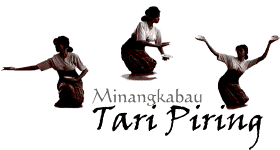
Earlier on, I mentioned that traveling through Indonesia, we experienced layers of magic that unfolded before us. Another layer then, was the various Indonesian cultural performances we were privileged to see. Tourism has helped keep traditional art forms alive in Indonesia. The ancient, pre-Islamic art forms of wayang golek (three-dimensional wood puppets of the Sundanese), wayang kulit (leather shadow puppets of the Central Javanese), and numerous dances we saw at kratons, temples, and other locations were performed before almost exclusively foreign audiences. The few Indonesians on Java to whom I inquired about these performances had little or no interest in them. This is not the case on Bali, though, where art and traditional performances are interwoven into desa, or village-culture often times with a clear line between these performances and commercial performances put on for tourists.
|

|

When traveling, I have a revulsion for being led around to see what others expect I want to see. Sometimes I like to look around a corner, behind the facade, and at the dust beneath the nicely polished curio. Sometimes this is easier than others, and when visiting areas of interest revolving around traditional arts in Yogya and Solo this can be nearly impossible. Simply put, cultural performances here are a tourist industry. I wonder if some of the Central Javanese traditional arts would disappear if tourists lost interest. All but gone, it seems, are the days of the Bedoyo Srimpi, the "Holy Dance" performed at wedding and coronations in the Mankunegaran Palace in Solo by virgin girls ranging in age from 7-9 years old who have fasted for 3-4 days. It's not simply that I have a taste for the exotic it's just that I have a thirst for authenticity. I live in a place where a multitude of peoples have converged only to have their diverse cultures subverted by the desires of these immigrants to assimilate. In spite of this penchant of mine, the performances we viewed were for the most part exceptional.

In Solo, we decided to visit the Sekolah Tinggi Seni Indonesia (STSI), a college for the instruction of traditional Indonesia dances. Our visit coincided with the final exam period, and we were permitted to watch the students as they demonstrated for their instructors what they had learned. We saw dances such as the Surakarta style, Srikandi-Cakil ("woman warrior-monster") and Eko Prawiro; Jawa Timur (East Java) style, Ngremo Jombang; Minangkabau style, Tari Piring ("Plate Dance"); and Yogya style, Srikandi Bisma or Beksan Tandingan Putri-Alus ("Fight between man and woman").
The dance styles were noticeably unique and a tribute as such to the diversity of Indonesians. In only one dance we saw during our visit to Indonesia, can I remember seeing a man and a woman dancing in a  complimentary way with each other. Invariably, they either danced separately or in combat with each other. Men dancing with each other usually were in combat as well. The Yogyakarta style dance we saw is known for its "soft" characters denoted by hand movements and facial gestures. The Surakarta style dances were more firm in nature - one represented a man with a sword and shield as he moved about in what resembled a martial arts display. The second Surakarta style dance we viewed was unique because we saw many female dance styles and this particular one was not characterized by the typically feminine movements given to Indonesian women, yet it was beautiful in its own right. The position of the dancer throughout much of the dance was with legs apart and knees bent at nearly a 90° angle. The movement, for the most part, was limited to the dancer's ankles which moved up and down to jingle bells wrapped around their ankles much like Southern Indian dance, and their arms and hands moved about as in martial arts. The Tari Piring was executed by a woman dancer, who held in each hand, a plate with a lit candle on it. The dance was fluid and rhythmical with the dancer swinging around in an upright position, then kneeling and moving all the while as if she were elegantly serving something to an honored guest.
complimentary way with each other. Invariably, they either danced separately or in combat with each other. Men dancing with each other usually were in combat as well. The Yogyakarta style dance we saw is known for its "soft" characters denoted by hand movements and facial gestures. The Surakarta style dances were more firm in nature - one represented a man with a sword and shield as he moved about in what resembled a martial arts display. The second Surakarta style dance we viewed was unique because we saw many female dance styles and this particular one was not characterized by the typically feminine movements given to Indonesian women, yet it was beautiful in its own right. The position of the dancer throughout much of the dance was with legs apart and knees bent at nearly a 90° angle. The movement, for the most part, was limited to the dancer's ankles which moved up and down to jingle bells wrapped around their ankles much like Southern Indian dance, and their arms and hands moved about as in martial arts. The Tari Piring was executed by a woman dancer, who held in each hand, a plate with a lit candle on it. The dance was fluid and rhythmical with the dancer swinging around in an upright position, then kneeling and moving all the while as if she were elegantly serving something to an honored guest.
The teachers we spoke with at STSI were extremely friendly and were willing to answer any questions posed them. They told us that it costs a student RP210,000 (a bit less than US$100) to attend one semester at STSI. Students study for five years and the dances they study come from Yogyakarta, Sunda, Jawa Timur, Bali, and Sumatra (Minangkabau). They have foreign students and one young woman from Japan performed her final exam while we were there. I asked these instructors about the students' chances for using their education for careers upon graduation. They told me that the jobs were found primarily in the tourist industry, and that getting one depended greatly on connections and nepotism.

We experienced a range of Balinese dance performances. I say "experienced" because the sound of the gamelan and the sights of the dancers often combined for an aural and visual splendor. Some of the best performances were presented by the Panca Artha Troupe and the Sekaa Gong Jaya Swara of Ubud. The Panyembrana, or welcome dance, was performed by a group of young girls dressed in tightly wrapped costumes and was similar to signature Balinese dances advertised around the world. If you've ever seen children dance, I suspect you can't truly imagine how these girls danced. They danced as only children could which is a compliment of the highest degree when one considers that American children are constantly pushed to dance as if they were adults. Children move differently than adults and the choreographers of these girls seemed to be quiet uniquely aware of this fact. I'm sure Balinese performers find the word "professionalism" and any translation of it foreign, but the professionalism of these girls was astounding. Their heart and soul appeared to be in their performance with a level of concentration even adults seem to have difficulty obtaining.
A Baris dancer we saw perform at the Ubud palace stands out in my mind from all the other performers we saw. Balinese dancers perform tricks* with the way they position their hands and fingers and he was a master of hand and facial gestures (*I say tricks because my wife has double jointed fingers and still she had difficulty mimicking the hand positions of Balinese dancers). His eyes in particular, provided an animation that you rarely see in a close-up picture of a face on a television screen yet he was on a stage which was large enough to accommodate a group of performers at any given time.
When you are accustomed to seeing traditional dances, it is easy to detect, with disappointment, weaknesses in dances which have been choreographed for traditional dancers yet without the brilliance that supports the longevity of a traditional dance. The Kijang Kencana was a "newly choreographed" dance that did anything but disappoint. It was danced by a small group of women whose costumes were the most obvious point of departure from tradition, but whose movements as a herd of deer were beautiful in their quiet evocation of animals without being whimsical.

Before you view the galleries linked below, I would like to make a couple of comments about music. Gamelan music as it is performed in the Kraton Yogyakarta and as it is performed on Bali couldn't be different. Yogya style is slower, and depending on your taste, either more refined or duller. Balinese style gamelan, the more familiar of the two outside of Indonesia, is louder, faster and somewhat similar to the difference of Rock 'n Roll to Classical music. As I mentioned before, there is a gap between that which is shown to tourists and that which interests Indonesians themselves. Time and again, when passing music shops or in restaurants whether on Java or Bali, I would hear a similar tune and it wasn't the typical gamelan music you associate with Indonesia. Perhaps more interesting is that it wasn't Western style music either. It was traditional Sundanese instrumental music from Western Java and it was wildly popular amongst Indonesians.

